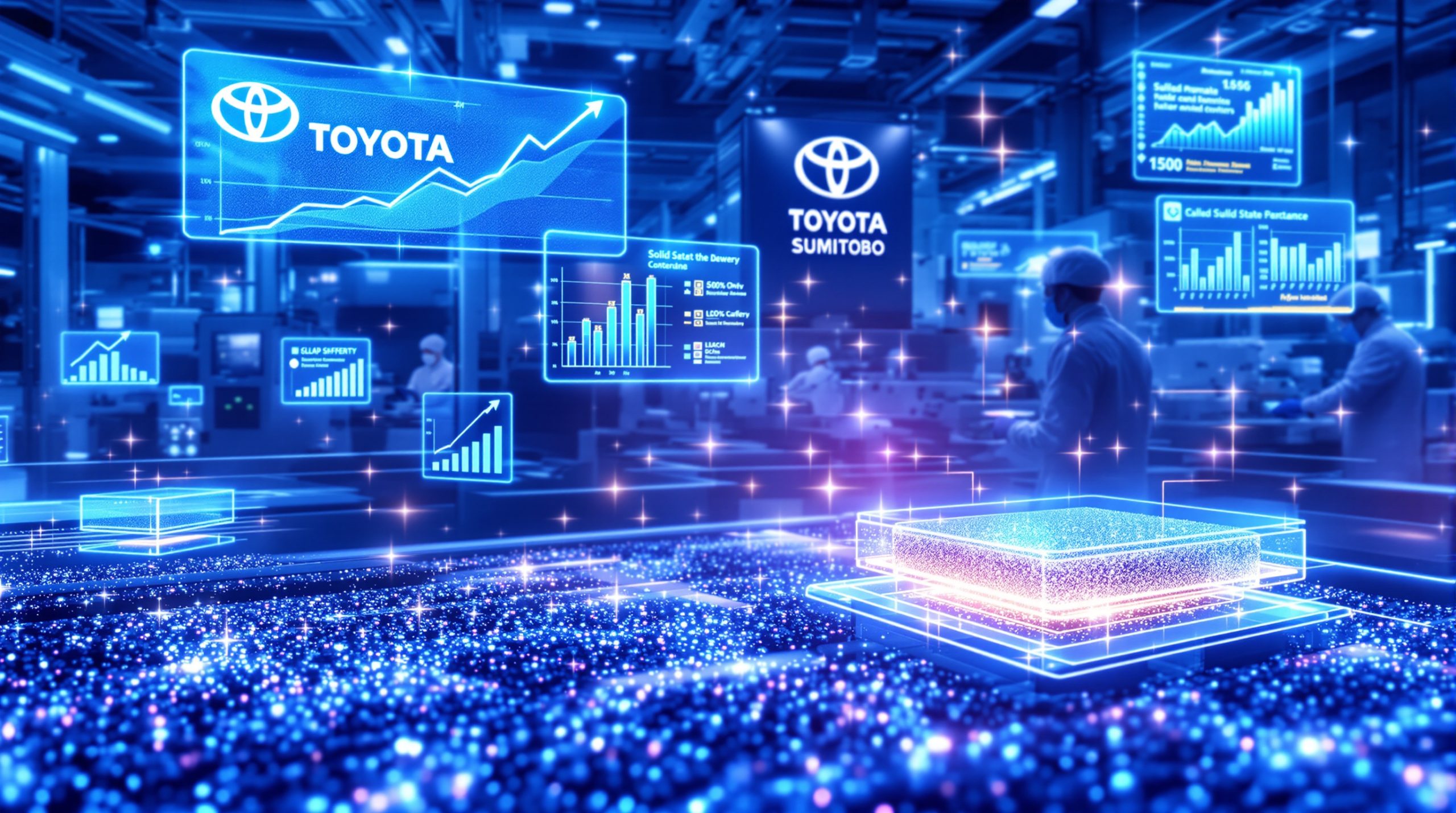What is ASM's Milestone in Rare Earth Commercialization?
Australian Strategic Materials (ASM) has achieved a significant milestone in the rare earth industry by completing its first commercial sale of heavy rare earth metals from its Korean metals plant. This transaction marks ASM's formal entry into the commercial heavy rare earth market and represents a critical step in establishing Western-aligned critical minerals energy transition supply chains outside of Chinese dominance.
The initial commercial shipment consisted of 2kg each of terbium and dysprosium metals, marking an important technical achievement and positioning ASM among a select few companies outside China capable of producing these high-value materials. This development is particularly significant as China currently controls approximately 85-90% of global rare earth processing capacity, according to the U.S. Geological Survey's 2024 report.
Industry analysts note that the ability to produce heavy rare earth metals at commercial purity levels demonstrates ASM's technological maturity and potential to become a key player in diversifying global supply chains for these strategic materials.
"Establishing an alternative mine-to-magnet rare earth supply chain is a significant challenge and strategic partnerships are critical in achieving this objective," noted Rowena Smith, ASM's Managing Director and CEO.
Beyond the technical achievement, this milestone signifies ASM's growing role in addressing critical vulnerabilities in global supply chains for materials essential to clean energy technologies and advanced electronics.
What Heavy Rare Earth Metals Did ASM Sell?
Terbium and Dysprosium: Critical Heavy Rare Earths
The inaugural commercial shipment comprised 2kg each of terbium (Tb) and dysprosium (Dy) metals, sold to Magnequench, a subsidiary of Neo Performance Materials. These elements belong to the heavy rare earth category and are among the most commercially valuable rare earth elements due to their critical applications and limited supply sources.
Terbium and dysprosium are particularly valuable due to their specialized roles in permanent magnet production. Terbium is used in small quantities to improve high-temperature performance and corrosion resistance, while dysprosium is added to prevent demagnetization at elevated temperatures, making these elements essential for applications where magnets must operate reliably in high-temperature environments.
The production of high-purity heavy rare earth metals requires sophisticated reduction and distillation processes, which ASM has successfully developed at its Korean plant. This technical capability sets ASM apart as one of the few non-Chinese companies able to produce these materials at commercial quality.
Strategic Destination and Application
The metals will be utilized at Magnequench's permanent magnet manufacturing facility in Estonia, reinforcing the development of Western-aligned rare earth supply chains. This facility represents part of Neo's global network spanning Canada, Estonia, Germany, Singapore, Thailand, and the United States.
The end-use applications for these magnets include electric vehicle motors, wind turbine generators, and various high-tech electronics where high-performance magnets capable of maintaining their magnetic properties at elevated temperatures are essential.
The sale's significance extends beyond the transaction itself, as it contributes to building resilience in critical mineral supply chains that Western governments have identified as strategically important for both economic and national security reasons.
How Does This Sale Fit into ASM's Broader Strategy?
Building on Previous NdPr Success
This heavy rare earth sale builds upon ASM's established success in the light rare earth market. The company recently delivered an additional 10 tonnes of neodymium-praseodymium (NdPr) metal to Neo, following a previous 19-tonne shipment. These consecutive deliveries demonstrate ASM's growing production capabilities and its ability to consistently meet commercial quality requirements.
The expansion from light rare earths (NdPr) into heavy rare earths (terbium and dysprosium) represents a natural progression in ASM's business development strategy and showcases the company's technical versatility in rare earth metallization.
Strategic Partnership Development
The sale coincides with a memorandum of understanding (MoU) between ASM and Neo Performance Materials, effective from July 15, 2025, for 12 months. This agreement aims to expand their strategic partnership across multiple areas:
- Supply of both light and heavy rare earths from ASM to Neo
- Tolling of Neo-supplied materials at ASM's Korean plant
- Potential gallium sales from Neo to ASM
The tolling arrangement is particularly noteworthy as it allows Neo to leverage ASM's metallisation expertise without necessarily owning all the raw materials in the process. This is a common strategy in the metals industry that can create mutually beneficial operational efficiencies.
The inclusion of gallium in the MoU highlights the strategic importance of this critical mineral used in semiconductors, LEDs, and solar panels. According to the USGS, gallium is essential for next-generation electronics and has faced supply constraints in recent years.
"Our collaboration with Neo is built on a strong foundation, and we're excited to take the next step together through this partnership," said Smith, highlighting the complementary nature of Neo's global footprint to ASM's vision of establishing secure, diversified, and sustainable critical materials supply chains.
Why Are Western-Aligned Rare Earth Supply Chains Important?
Reducing Supply Chain Vulnerabilities
The development of rare earth production and processing capabilities outside of China addresses critical vulnerabilities in global supply chains. China's dominance in rare earth processing—approximately 85-90% of global capacity according to USGS data—creates significant supply risks for industries dependent on these materials.
The 2010 rare earth crisis, when China restricted exports causing prices to spike by up to 3,000% for some elements, demonstrated the dangers of over-reliance on a single source country. This event triggered worldwide efforts to develop alternative supply chains, of which ASM's achievement represents a tangible outcome.
Supply diversity becomes increasingly critical as demand for rare earth elements grows with the acceleration of the clean energy transition and digitalization.
Supporting Clean Energy Transition
Secure supplies of rare earth elements are crucial for manufacturing permanent magnets used in electric vehicles, wind turbines, and other clean energy technologies. A typical electric vehicle motor may contain 1-2 kg of rare earth elements, while each megawatt of wind turbine capacity may require up to 200 kg of rare earth magnets.
Without reliable access to these materials, the global transition to renewable energy faces significant constraints. As countries worldwide commit to ambitious decarbonization targets, the strategic importance of rare earth supply chains continues to grow.
Geopolitical Significance
The collaboration between ASM and Neo represents a step toward reducing dependency on Chinese rare earth supplies, aligning with Western governments' initiatives to secure critical mineral supply chains.
"The U.S. Department of Defense has identified rare earths as critical to national security and supports efforts to create alternative supply chains," notes a 2023 Department of Defense report on rare earth supply chain security.
Both the U.S. and EU have implemented substantial policy measures to support rare earth supply chain development, including the U.S. Defense Production Act Title III grants and the EU's Critical Raw Materials Act. These initiatives recognize that access to rare earths has evolved from a purely commercial concern to a matter of national security and industrial policy.
What Are the Key Executive Perspectives on This Development?
ASM Leadership View
Rowena Smith, ASM's Managing Director and CEO with over two decades of mining industry experience including senior roles at Rio Tinto, emphasized the strategic importance of the partnership:
"These recent sales of terbium, dysprosium, and an additional 10 tonnes of NdPr metal further demonstrate the strength of our partnership and the growing demand for ASM's high-purity rare earth products – enabled by our in-house metallisation expertise."
Smith highlighted the complementary nature of Neo's global footprint to ASM's vision of establishing secure, diversified, and sustainable critical materials supply chains. She further noted the significance of building alternative supply chains:
"Establishing an alternative mine-to-magnet rare earth supply chain is a significant challenge and strategic partnerships are critical in achieving this objective."
Neo Magnequench Perspective
Greg Kroll, Neo Magnequench Executive Vice President, provided insight into how ASM's capabilities align with Neo's strategic requirements:
"ASM's ability to produce high-purity rare earth metals using its in-house expertise aligns with Neo's commitment to sourcing materials from trusted, innovative partners. We look forward to deepening our collaboration as global demand for these essential materials continues to grow."
This statement reflects Neo's strategy of diversifying its supply sources while maintaining strict quality standards—a critical consideration in the rare earth sector where material purity directly impacts downstream product performance.
The complementary perspectives from both companies highlight their shared vision of establishing resilient supply chains while maintaining the technical standards necessary for high-performance applications.
What Makes This Development Significant for the Rare Earth Industry?
Technological Capability Demonstration
The sale demonstrates ASM's technical capability to produce high-purity heavy rare earth metals, which require more sophisticated processing than light rare earths. Heavy rare earths are typically found in lower concentrations and require more complex separation processes due to their similar chemical properties.
This technical achievement positions ASM as one of the few companies outside China with this capability. While companies like Lynas Rare Earths have established production of light rare earths, commercial-scale heavy rare earth metal production remains extremely limited outside China.
ASM's current heavy rare earth production is at the kilogram scale, but the company aims to scale up to meet industrial demand. This progression from laboratory to commercial scale represents a significant technical milestone in the rare earth industry.
Mine-to-Magnet Supply Chain Development
The partnership contributes to the challenging goal of establishing a complete mine-to-magnet rare earth supply chain outside of China. This objective requires coordinating multiple specialized steps:
- Mining and concentration of rare earth ores
- Separation into individual rare earth oxides
- Conversion to metals and alloys
- Magnet manufacturing
- Integration into end-use products
Each step requires specialized expertise, and the ASM-Neo partnership addresses critical links in this chain. ASM's capability in metallization complements Neo's downstream processing and magnet manufacturing expertise, creating a more cohesive Western-aligned supply chain.
Market Diversification
The development represents a step toward greater diversification in the global rare earth market, potentially reducing price volatility and supply risks for manufacturers dependent on these critical materials.
Dysprosium oxide prices have historically shown significant volatility, ranging from approximately $240/kg in 2020 to $450/kg in 2023 according to USGS data. This volatility directly impacts manufacturing costs and planning for industries using rare earth magnets.
By introducing additional supply sources, ASM's entry into the heavy rare earth market could contribute to greater price stability over time, benefiting downstream manufacturers and ultimately consumers of products containing rare earth magnets.
What Are Heavy Rare Earths and Why Are They Important?
Definition and Properties
Heavy rare earths are the less abundant members of the rare earth element family. According to the International Union of Pure and Applied Chemistry (IUPAC), heavy rare earths (HREEs) are defined as those with atomic numbers from 64 (gadolinium) to 71 (lutetium) plus yttrium (atomic number 39), due to similar ionic radii.
These elements typically have higher atomic numbers and are often more difficult to extract and process than light rare earths. They are found in lower concentrations in most deposits, with the exception of certain specialized deposit types like ion-adsorption clays predominantly found in southern China.
Over 95% of heavy rare earth production comes from China, primarily from these ion-adsorption clay deposits, creating an even more concentrated supply situation than for light rare earths.
Critical Applications
These elements are essential for manufacturing high-performance permanent magnets that maintain their magnetic properties at high temperatures, making them crucial for:
- Electric vehicle motors (particularly for high-efficiency designs)
- Wind turbine generators (especially direct-drive systems)
- Defense systems requiring compact, powerful magnets
- High-tech electronics including hard disk drives and speakers
Dysprosium may comprise 0-10% of the NdFeB magnet weight, and terbium 0-2%, depending on the required temperature resistance. While used in relatively small quantities, these elements are indispensable for high-temperature applications—without them, magnets would lose their magnetic properties at elevated operating temperatures.
Supply Challenges
Heavy rare earths face particularly acute supply challenges, with even higher concentration of production in China than light rare earths. This concentration creates significant supply vulnerabilities for industries dependent on these materials.
The geological distribution of heavy rare earth deposits is more limited than light rare earths, with economically viable concentrations found in only a few regions globally. Additionally, the complex chemistry of separating individual heavy rare earths from each other adds technical challenges to establishing new supply sources.
Recycling of rare earths from end-of-life products is emerging as a supplementary source, but primary production remains dominant due to technical challenges in recovery and the growing overall demand for these elements.
What's Next for ASM and Neo's Partnership?
Expanded Collaboration Opportunities
The MoU outlines several areas for potential expanded collaboration between the companies. Joint research and development initiatives to improve rare earth processing technologies represent a particularly promising avenue for cooperation.
R&D efforts could focus on reducing the cost and environmental impact of heavy rare earth separation, which is currently energy-intensive and often requires large volumes of chemical reagents. Innovations in this area could provide both companies with competitive advantages while addressing sustainability concerns.
The complementary expertise of the two companies—ASM in metallization and Neo in magnet manufacturing—creates natural synergies for collaborative innovation throughout the supply chain.
Scaling Production Capabilities
As demand for rare earth elements continues to grow, both companies will likely focus on scaling their production capabilities to meet market needs while maintaining high purity standards.
ASM's Dubbo Project in Australia represents a potential source of rare earths and other critical minerals that could feed into the company's metals processing facilities. This polymetallic deposit contains both light and heavy rare earths along with zirconium, niobium, and hafnium, offering potential for integrated production.
Achieving commercial scale for heavy rare earth production represents a significant challenge but also a substantial opportunity given the limited number of suppliers outside China.
Potential Integration with Mining Operations
ASM's long-term strategy may involve further integration with mining operations to create a more complete mine-to-metal supply chain for rare earth elements.
The Dubbo Project in New South Wales, Australia could provide ASM with a captive source of rare earth materials, reducing dependency on third-party suppliers and creating a more vertically integrated business model. This integration could improve supply security and potentially reduce costs through operational synergies.
Development of the Dubbo Project would represent a significant step toward establishing a more complete non-Chinese rare earth supply chain, from mining through to metal production. Furthermore, it could significantly strengthen Australia's strategic reserve of critical minerals while mitigating US–China trade impact on supply chains.
FAQ: ASM's Rare Earth Commercialization
How does ASM's Korean metals plant fit into global rare earth supply chains?
ASM's Korean metals plant represents one of the few facilities outside China capable of producing high-purity rare earth metals, positioning it as a strategic asset in diversifying global supply chains for these critical materials. The plant employs proprietary metallization technology to convert rare earth oxides into high-purity metals suitable for magnet production and other advanced applications.
This facility addresses a critical gap in Western-aligned rare earth supply chains—the conversion of separated rare earth oxides into metals and alloys. While some progress has been made in developing mining and separation capabilities outside China, metallization has remained a significant bottleneck.
What makes heavy rare earths particularly valuable?
Heavy rare earths like terbium and dysprosium command premium prices due to their relative scarcity, processing challenges, and essential role in high-performance permanent magnets that can operate at elevated temperatures. These elements typically sell for hundreds of dollars per kilogram compared to tens of dollars for more abundant light rare earths.
Their unique electronic properties, which contribute to enhancing coercivity (resistance to demagnetization) in NdFeB magnets, make them irreplaceable in many high-performance applications. Currently, no commercially viable substitutes exist for these elements in their primary applications.
How might this development impact rare earth markets?
The establishment of additional supply sources outside China could help stabilize prices and reduce supply risks, potentially encouraging more manufacturers to incorporate rare earth magnets into their designs with greater confidence in supply security.
While ASM's current production volumes are relatively small compared to global demand, the demonstration of technical capability establishes a foundation for future scaling. As additional non-Chinese supply enters the market, it may reduce the premium currently commanded by Western-produced materials due to their supply security advantages.
What challenges remain in establishing Western rare earth supply chains?
Despite this progress, significant challenges remain, including scaling production to commercially viable levels, competing with established Chinese producers on cost, and developing the full spectrum of processing capabilities needed for a complete supply chain.
Financing remains a critical challenge, as rare earth projects typically require substantial capital investment with extended timelines to profitability. Regulatory approvals for mining and processing operations also present hurdles, particularly regarding environmental considerations.
Additionally, building the technical expertise required for sophisticated separation and metallization processes outside China requires significant investment in human capital and research infrastructure, as much of the global expertise in these areas has been concentrated in China for decades. Recent changes in US critical minerals policy and advancements in modern mine planning may help address some of these challenges, according to industry experts at [ASM's official website](https://asm-au.com/wp-content/uploads/2025/06/20
Ready to Catch the Next Major Mineral Discovery?
Gain immediate alerts on significant ASX mineral discoveries with Discovery Alert's proprietary Discovery IQ model, transforming complex data into actionable investment insights for both short-term traders and long-term investors. Explore why major mineral discoveries can lead to exceptional returns by visiting Discovery Alert's dedicated discoveries page and position yourself ahead of the market.




